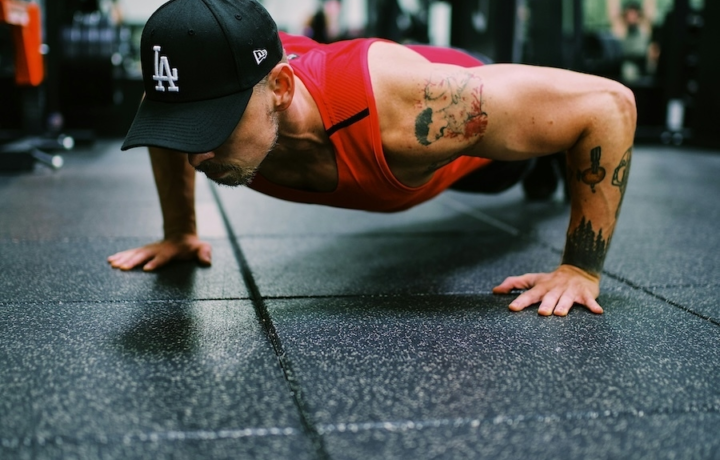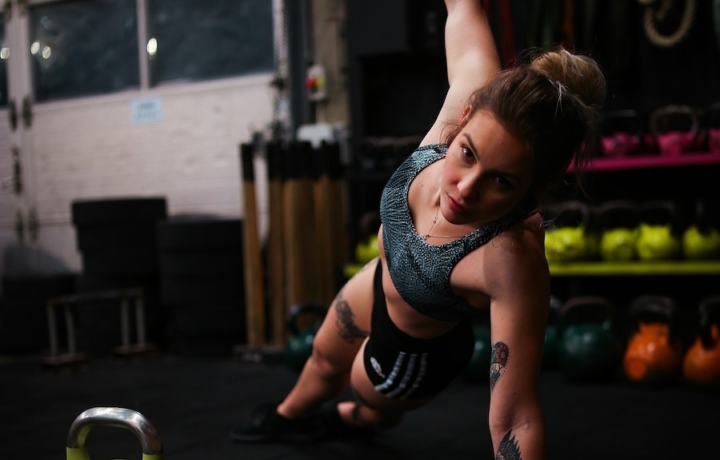Exercise
Bird Dog

Bird Dog
How to Perform
- Begin on all fours with your hands directly beneath your shoulders and knees directly beneath your hips, keeping your back flat.
- Engage your core by drawing your navel toward your spine, ensuring your lower back maintains a neutral position.
- Extend your right arm forward while simultaneously extending your left leg backward, keeping both limbs at torso height. Exhale as you extend.
- Maintain a stable torso by avoiding rotation or tilting of your hips and shoulders as you extend your limbs.
- Hold the extended position for 1-2 seconds while maintaining steady breathing and core engagement.
- Return to the starting position with control, bringing your hand and knee back to the floor as you inhale.
- Repeat the movement with the opposite arm and leg, extending your left arm forward and right leg backward.
- Continue alternating sides for the prescribed number of repetitions, focusing on smooth transitions and maintaining stability throughout.
Important information
- Keep your neck in a neutral position by gazing at the floor about 6-12 inches in front of your hands, avoiding dropping or lifting your head.
- If you experience wrist discomfort, try performing the exercise with your hands on dumbbells or pushing through your knuckles rather than your palms.
- Make sure your extended limbs remain parallel to the floor—avoid lifting them higher than your torso as this can strain your lower back.
- Focus on stability over range of motion; it's better to extend your limbs less if it means maintaining a neutral spine position.

Bird Dog
Exercise Details
Primary Muscles
Muscle Groups
Mechanic
Built for progress
Take the guesswork out of training
Create personalized AI-powered workout plans that evolve with you. Train smarter, track every rep and keep moving forward, one workout at a time.






The Bird Dog stands out as a foundational core stability exercise accessible to fitness enthusiasts at the beginner level, making it perfect for those just starting their fitness journey. This gentle yet effective movement simultaneously engages multiple muscle groups including the glutes, abdominals, and erector spinae muscles along the spine, creating a comprehensive strengthening experience without requiring advanced fitness abilities.
What makes the Bird Dog particularly valuable is its versatility across different workout phases. As a recovery exercise, it promotes blood flow and gentle movement without taxing the nervous system, allowing muscles to actively repair while maintaining mobility. During warm-up routines, it awakens the core stabilizers and primes the posterior chain for more demanding movements to follow, reducing injury risk in subsequent exercises.
The exercise brilliantly addresses two critical aspects of fitness that are often overlooked: core stability and mobility. While many mistakenly equate core training with endless crunches, the Bird Dog trains the deeper core muscles that maintain spinal alignment during movement. This translates directly to improved posture in daily activities and enhanced performance in other exercises. Simultaneously, it develops mobility through the shoulders and hips, addressing common restriction areas for many people who spend hours sitting.
The beauty of the Bird Dog lies in its simplicity and profound effect on total-body coordination. By creating opposing forces through the extended limbs, it challenges the body's proprioception and balance systems, essentially teaching your brain and muscles to work together more efficiently. This neurological training aspect makes it particularly valuable for athletic development and injury prevention.
Regular practice of the Bird Dog can lead to noticeable improvements in posture, reduced lower back discomfort, and greater body awareness during other physical activities. For these reasons, it remains a staple recommendation among physical therapists, strength coaches, and rehabilitation specialists across the fitness spectrum.
FAQ - Bird Dog
The Bird Dog primarily engages your core stabilizers (including the transverse abdominis), erector spinae along your spine, gluteal muscles, and shoulder stabilizers. This comprehensive activation creates a full posterior chain strengthening effect while teaching anti-rotation stability.
Start on all fours with a neutral spine, then extend opposite arm and leg while maintaining a stable torso without rotating or sagging. Keep your neck aligned with your spine (not looking up), and focus on extending limbs horizontally rather than lifting them high, which can compromise form.
The Bird Dog is generally considered safe and is often prescribed by physical therapists for those with back issues because it strengthens core muscles without compressing the spine. Start with smaller movements if you have existing back pain, and always maintain a neutral spine position throughout the exercise.
Increase difficulty by adding hold time (30+ seconds per side), incorporating pulses at the extended position, using resistance bands, placing a weight on your lower back, or performing the movement on an unstable surface like a foam pad. You can also try the "bird dog row" variation by holding a light dumbbell in your extended hand.
Bird Dogs can safely be performed 3-5 times weekly, either as part of your warm-up routine (2-3 sets of 8-10 reps per side) or during core-focused training days. Their low-impact nature makes them suitable for daily practice if you're working on posture correction or rehabilitation.














